

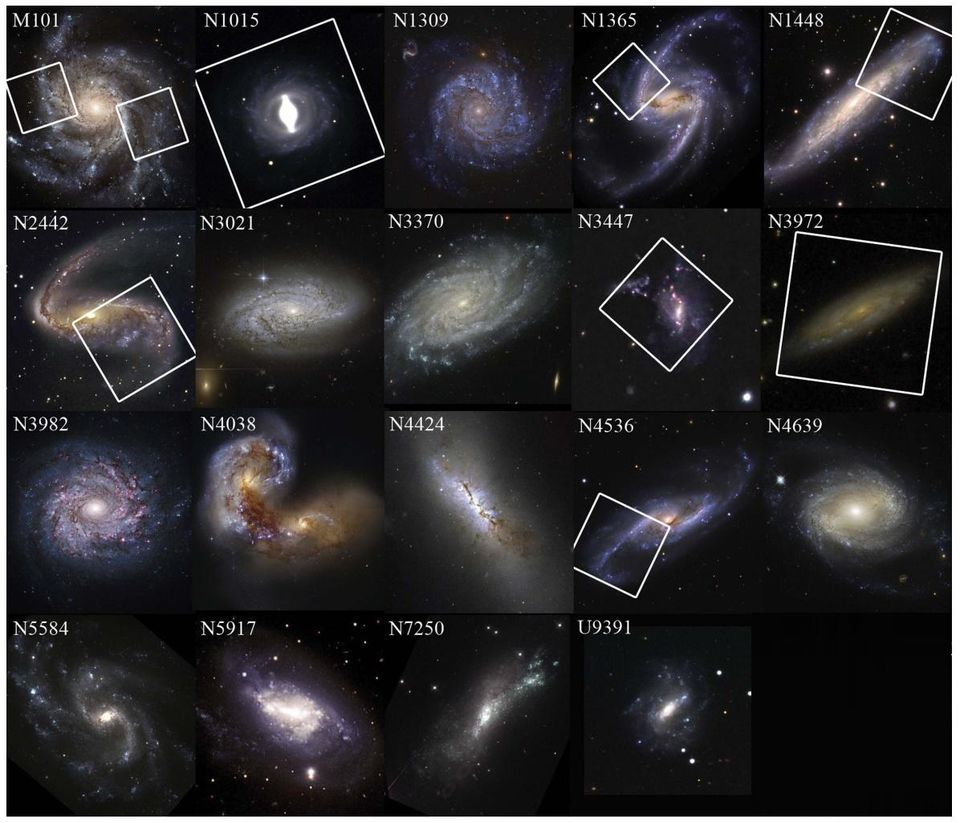
These are the 19 known galaxies where both Type Ia supernovae and individual Cepheid variable stars have been observed and measured. That's a very small number, statistically, to draw conclusions about the entire Universe. S.L. HOFFMANN ET AL. (2016) APJ, V. 830, NO. 1

The expanding Universe, full of galaxies and the complex structure we observe today, arose from a smaller, hotter, denser, more uniform state. It took thousands of scientists working for hundreds of years for us to arrive at this picture, and yet the lack of a consensus on what the expansion rate actually is tells us that either something is dreadfully wrong, we have an unidentified error somewhere, or there's a new scientific revolution just on the horizon. C. FAUCHER-GIGUÈRE, A. LIDZ, AND L. HERNQUIST, SCIENCE 319, 5859 (47)
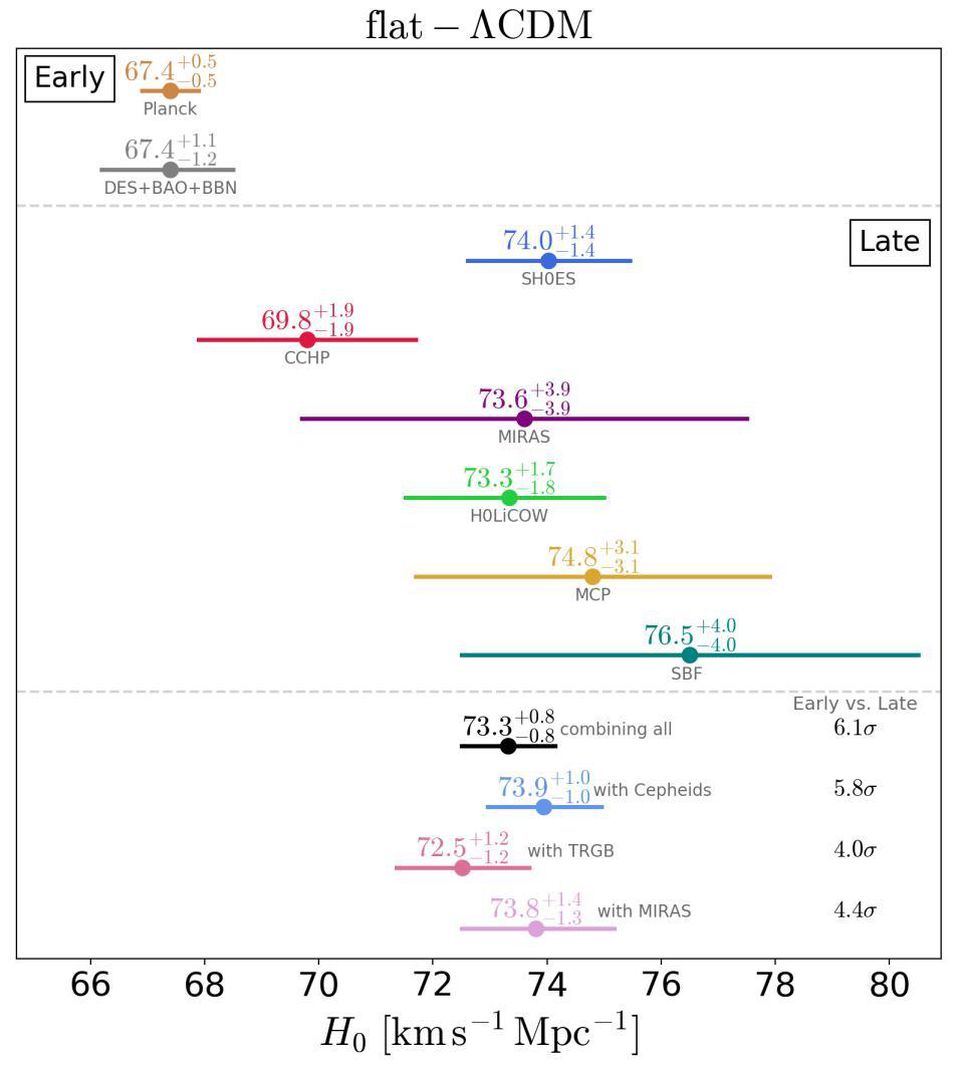
A series of different groups seeking to measure the expansion rate of the Universe, along with their color-coded results. Note how there's a large discrepancy between early-time (top two) and late-time (other) results, with the error bars being much larger on each of the late-time options. L. VERDE, T. TREU, AND A.G. RIESS (2019), ARXIV:1907.10625 Signals from the early Universe yield expansion rates of 67 km/s/Mpc, while late-time signals yield systematically larger values.
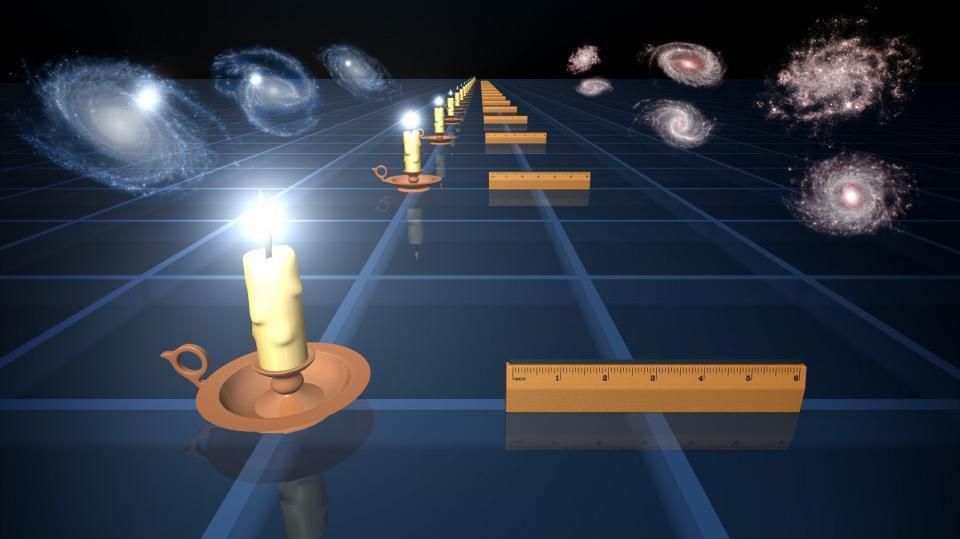
Standard candles (L) and standard rulers (R) are two different techniques astronomers use to measure the expansion of space at various times/distances in the past. Based on how quantities like luminosity or angular size change with distance, we can infer the expansion history of the Universe. Using the candle method is part of the distance ladder, yielding 73 km/s/Mpc. Using the ruler is part of the early signal method, yielding 67 km/s/Mpc. NASA / JPL-CALTECH

The construction of the cosmic distance ladder involves going from our Solar System to the stars to nearby galaxies to distant ones. Each “step” carries along its own uncertainties, especially the Cepheid variable and supernovae steps; it also would be biased towards higher or lower values if we lived in an underdense or overdense region. NASA,ESA, A. FEILD (STSCI), AND A. RIESS (STSCI/JHU)
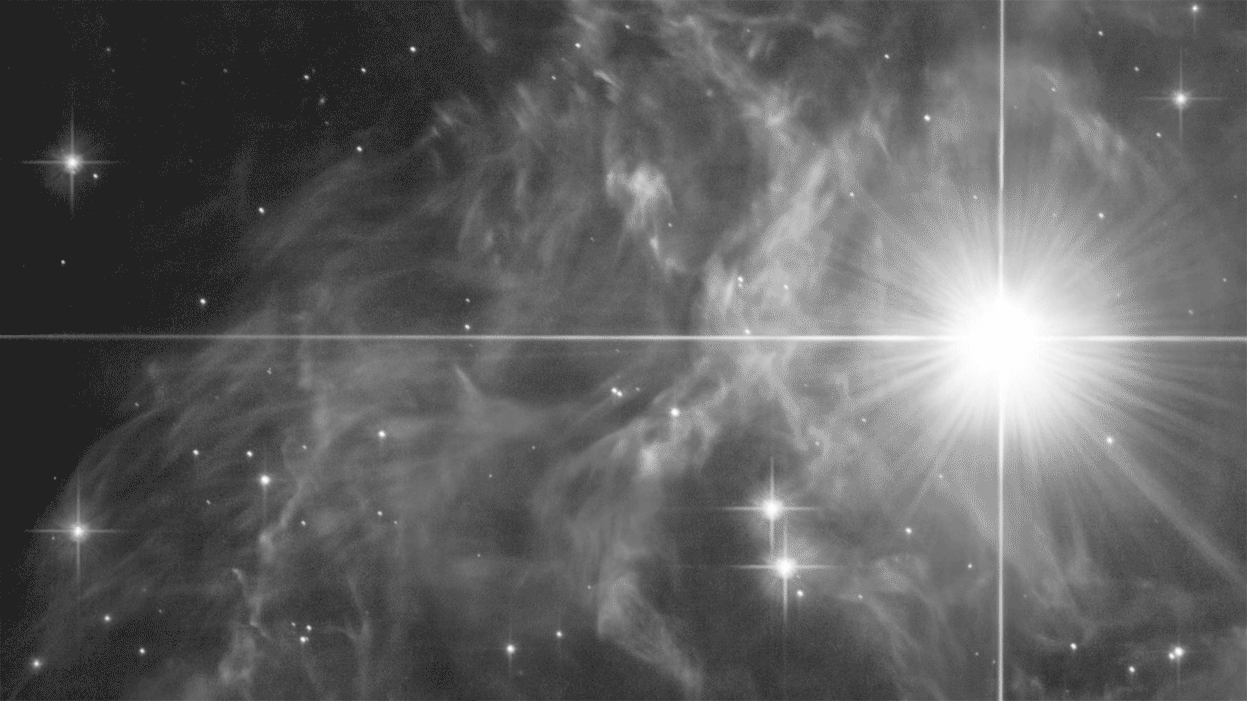
The Variable Star RS Puppis, with its light echoes shining through the interstellar clouds. Variable stars come in many varieties; one of them, Cepheid variables, can be measured both within our own galaxy and in galaxies up to 50-60 million light years away. This enables us to extrapolate distances from our own galaxy to far more distant ones in the Universe. Other classes of individual star, such as a star at the tip of the AGB or a RR Lyrae variable, can be used instead of Cepheids. Recent tip-of-the-red-giant-branch results presently point to a smaller late-time value of 69.8 km/s/Mpc. NASA, ESA, AND THE HUBBLE HERITAGE TEAM

Spiral galaxy UGC 9391, shown here, is one of only 19 important galaxies known to have housed a recently observed Type Ia supernova (blue cross) as well as individual, resolvable Cepheid variable stars. Even a small uncertainty in a sample of just 19 galaxies could bias these results towards artificially higher values. NASA, ESA, L. FRATTARE (STSCI) AND A. RIESS (STSCI/JHU) ET AL.
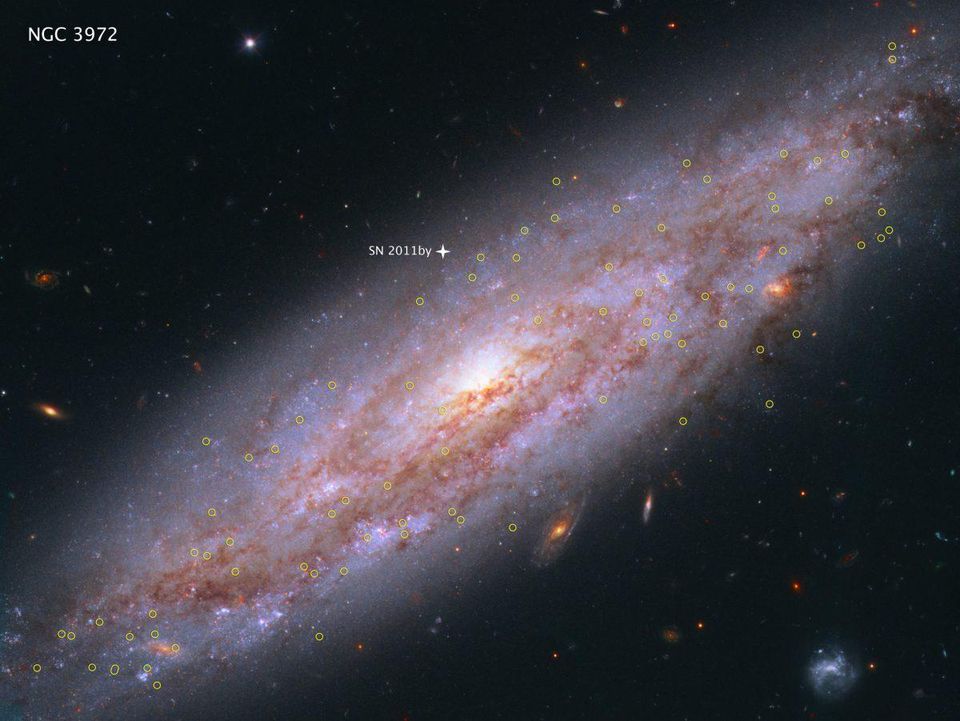
NGC 3972, depicted here, is another one of the 19 known galaxies that are close enough to have individual Cepheid variable stars resolved from within them (yellow circles), but also to have an observed supernova (labeled, with diamond) go off within it in the past few decades. Galaxies like this are crucial for building up a successful cosmic distance ladder, but run the risk of providing a biased sample. A distance ladder's strength is only as good as its weakest rung. NASA, ESA, A. RIESS (STSCI/JHU)
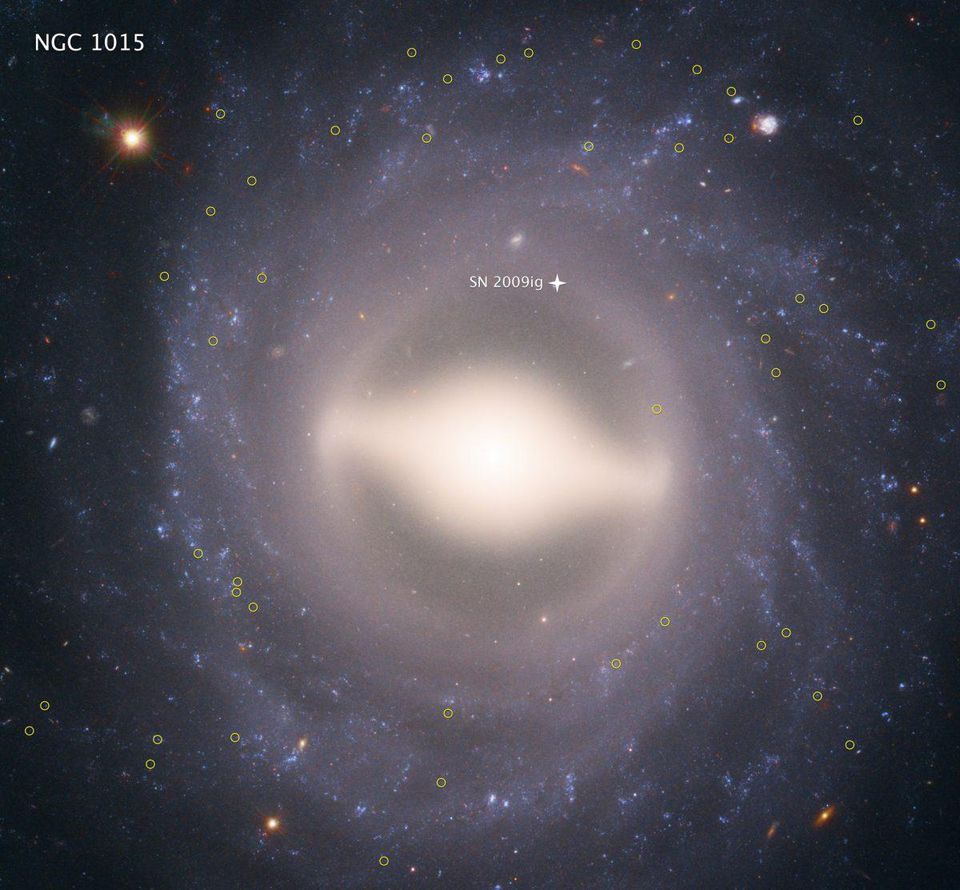
The beautiful barred spiral galaxy NGC 1015, shown here as imaged by the Hubble Space Telescope in 2013, also contains many Cepheid variable stars as well as an observed, recent Type Ia supernova. This information is used to calibrate the luminosity of distant Type Ia supernovae that cannot be measured along with Cepheids, but even a small bias at the ~few-percent level could perhaps explain the entirety of this cosmic controversy. NASA, ESA, A. RIESS (STSCI/JHU)
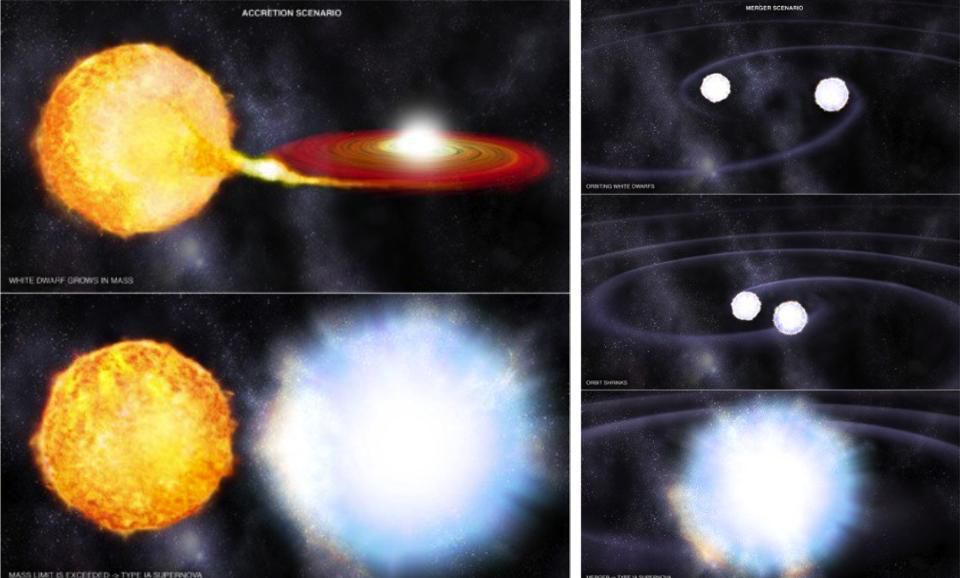
Two different ways to make a Type Ia supernova: the accretion scenario (L) and the merger scenario (R). Without a binary companion, our Sun could never go supernova by accreting matter, but we could potentially merge with another white dwarf in the galaxy, which could lead us to revitalize in a Type Ia supernova explosion after all. NASA / CXC / M. WEISS
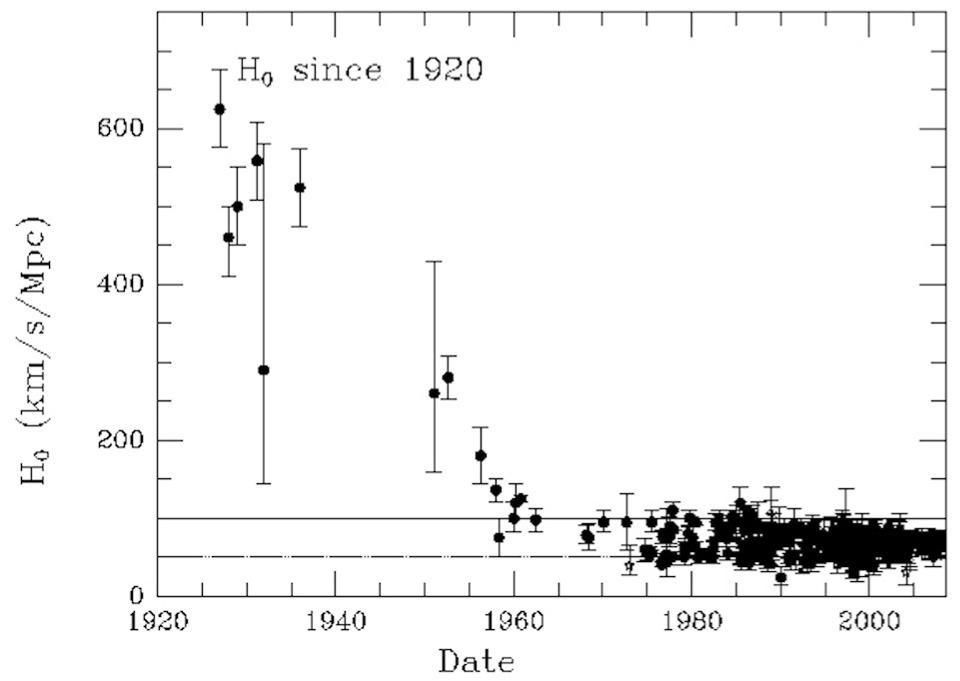
Before converging on a value of ~71 km/s/Mpc, values for the modern-day Hubble expansion rate underwent an enormous number of changes, as big discoveries such as the existence of two types of Cepheids, an understanding of peculiar velocities, calibration issues and assumptions over the properties of distance indicators represented real, physical issues whose resolution resulted in a better understanding of the astrophysics governing the Universe. Perhaps the resolution of this current puzzle will be much the same. J. HUCHRA, 2008
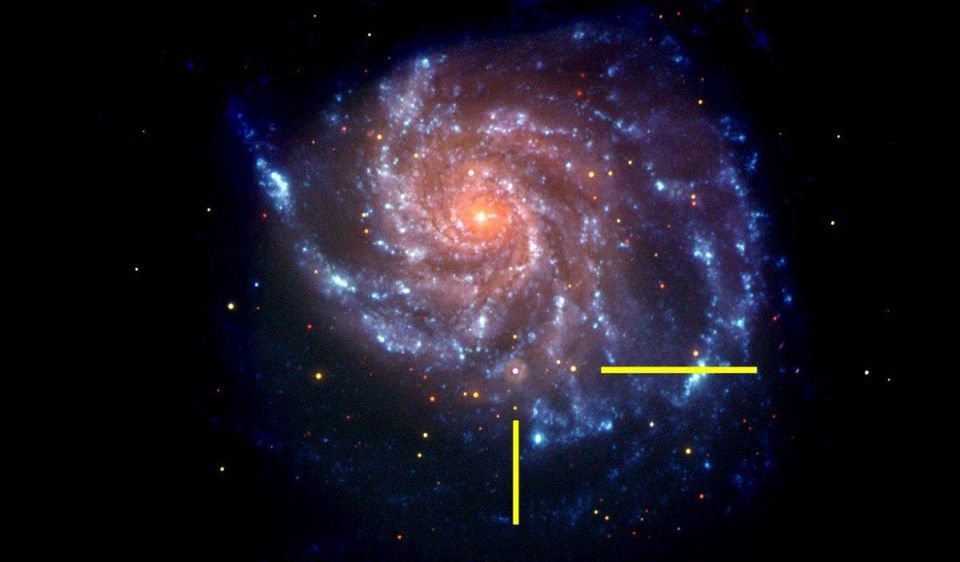
As time continues to pass, greater numbers of nearby galaxies are expected to experience Type Ia supernovae explosions inside of them. As measuring Cepheids in nearby galaxies is less of a challenge than finding nearby Type Ia supernovae, this should enable us to raise the number significantly, reducing our uncertainties and lowering the probability of biases in any one particular distance ladder measurement. NASA / SWIFT